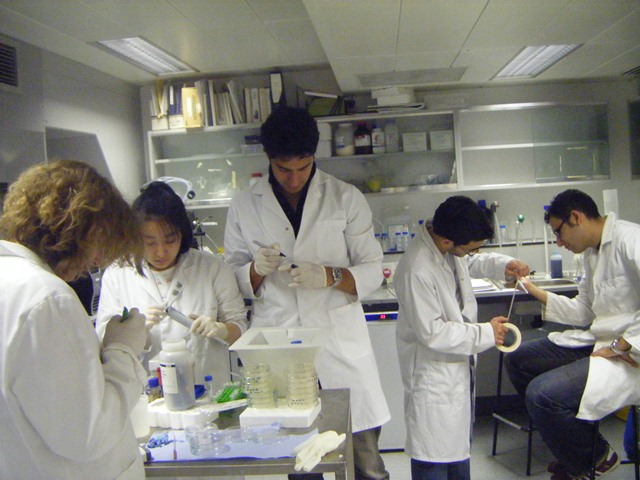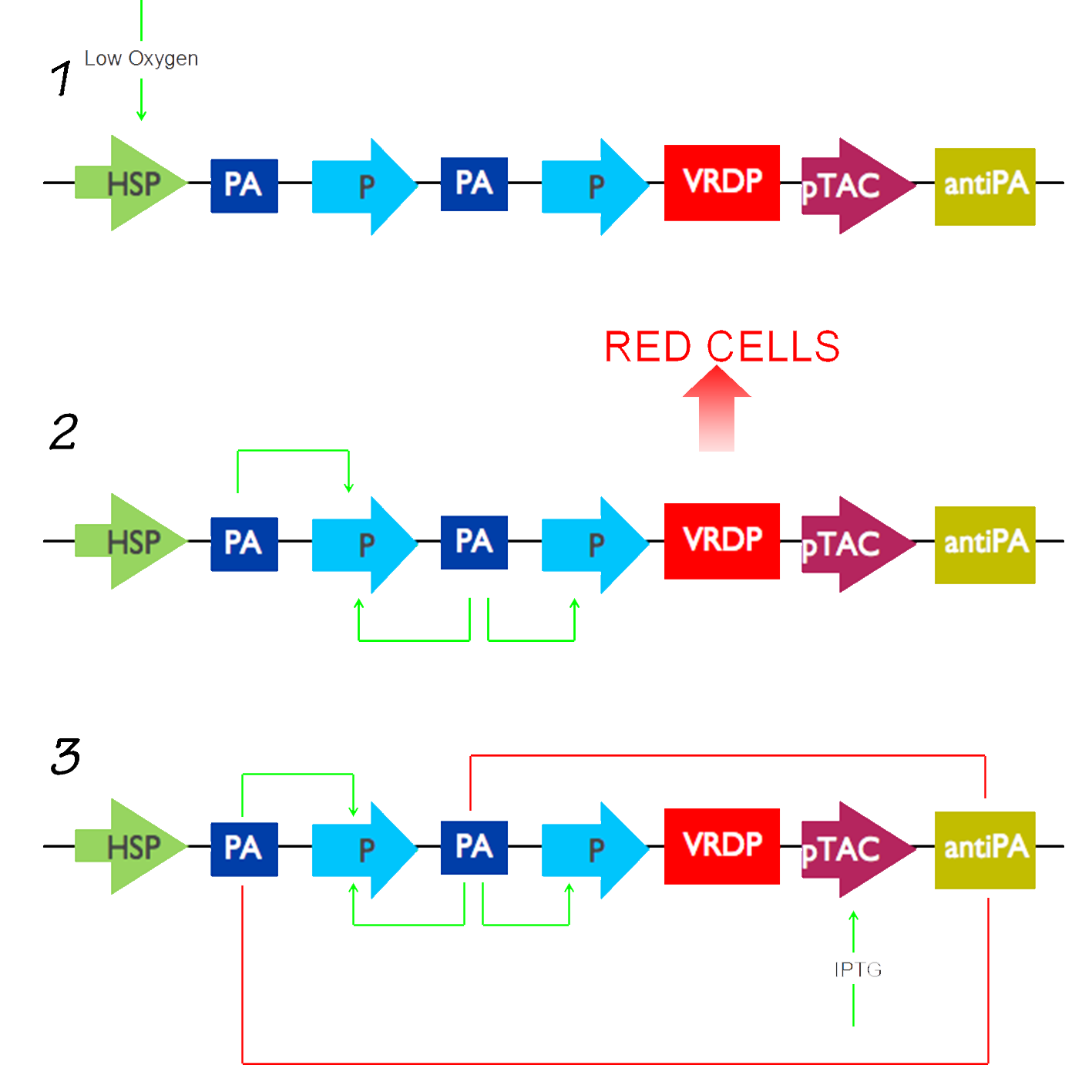Team:UCL London/Project Description
From 2010.igem.org
Project Hypoxon
Project Abstract
Synthetic biology is now in a position to overcome many, hitherto, cumbersome and resource consuming manufacturing tasks. Society has now accepted the advent of such entities as recombinant insulin , monoclonal antibodies etc as essential for the future well being of human life. We can now use the bio engineered tools available to us to create systems which make manufacturing health or environmentally associated products simpler and more economical.
To this end, this project addresses the hypothesis that we can use auto-induction as a means of control of production of recombinant products at a pre-destined time in large production vessels thus alleviating the need for extra resources. To illustrate this we are using E.coli as our main vehicle with the prospect of removing the need for IPTG induction as a mechanism for the production of a vast array of biopharmaceuticals. We expect this technology to be equally applicable to other systems such as yeast and mammalian cells.
It is estimated that through this auto-induction the production of economically viable biopharmaceuticals with less side-effects can be achieved. The application of this project goes further into exploring the potential of applying this principle in yeast, mammalian or other expression systems for the production of complex biomolecules for the treatment of major diseases.
Project Description
During the initial phase of the fermentation process, the recombinant E.coli cells with our genetic circuit will grow very slow at first, and this initial phase is referred to as the "Log Phase". As this happens, the DOT(Dissolved Oxygen Tension) in the fermenter decreases, at a rate which is indirectly proportional to the rate of cellular growth. The DOT will continue to fall untill it falls in the region of 15-20%. Now usually during protein expression in E.coli clls lacking our genetic circuit, this is the point at which our inducer IPTG would be added manually resulting in the lacI repressser being repressed itself and thus allowing our hybrid pTAC to be expressed thus allowed the desired protein to be expressed. However, bearing in mind the DOT, we will use this unique factor to introduce hypoxia into our circuit. Essentilly, our circuit will start of with an HSP, Hypoxia Sensitive Promoter, which will detect the change in DOT when it falls belew the threshold of 20%. At that point, it will be triggered and will activate a positive feedback loop consisting of 2 promoter Activators and 2 Promoters in the following format;
PA - P - PA - P
The promoter activator activates the promoter, which then activates another promoter activator and thus produces more of the promoter. This is essential as it increases the rate of protein expression. With this being activated, the VRDP, which is our red dye protein, it too will be activated subsequently resulting in the expression of our red dye protein indicating the succesful operation of our circuit.In our circuit for the sake of proof of principle, instead of expressing a typical protein, we will introduce a genetic sequence which translates a fluorescent red protein so that once it is translated, it will secrete the red dye and hence prove that our circuit does in actual fact work and added an artistic touch to our project.
The pTAC here no longer serves the purpose of being our expression system, it now serves the purpose of commencing the switch off of our circuit. This will happen by addition of IPTG which will result in the pTAC no longer being repressed. This will allow the activation of the pTAC which will activate the consecutive antiPA gene resulting in repression of the promoter activators and hence the switching off of our genetic circuit. Now in biopharmaceutical production, this extra sequence consisting of the pTAC and the antiPA is not required since there is no need to switch the genetic circuit of and so will allow maximum protein expression. But in this project, we feel it is essential to provide a mechanism for its closure, a genuine rule of thumb in Synthetic biology.
Thanks to the efforts of our artists, we managed to summarize what we hoped to achieve in the lab in a simple and animation;
Here, the green blocks represent the level of DOT in the fermenter, red-blue being the rate of protein expression subsequent ( 2 representing the positive feedback loop of 2 promoters and 2 promoter activators), and yellow being the activation of the hypoxia sensitive promoter due to the reduction of the DOT level below the threshold of around 20%.
You can see in the animation that initially, there is a slow then rapid fall in the DOT concentration, as it falls to very low levels, hypoxia is activated shown by the sudden appearance then disappearance of the yellow lego bricks. At that time, the rate of protein expression increases as our genetic circuit is now active. A subsequent increase in DOT levels is also observed. These set of rapid changes in DOT levels is known as "The DOT Spyke", and takes place as the fermentation process changes from one in batch to fed-batch due to the consequent addition of glycerol to maintain the cells during protein expression.


 "
"





 Twitter
Twitter Facebook
Facebook UCL
UCL Flickr
Flickr YouTube
YouTube